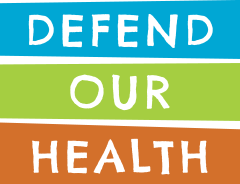EPA Puts Manufacturers of Toxic “Forever Chemicals” on Notice by Proposing PFOA and PFOS as Hazardous Substances
August 26, 2022 |
Defend Our Health celebrates new regulation and calls on EPA to extend its reach on PFAS
The Environmental Protection Agency (EPA) made history today by proposing classifying PFOA and PFOS as Hazardous Substances under the Comprehensive Environmental Response, Compensation and Liability Act (CERCLA), popularly known as the Superfund Law. This would be the first time in the 40-year history of the law that the EPA utilizes its authority to designate a chemical as a hazardous substance. The listing would give the EPA significant tools to help clean up land and water contaminated by the two PFAS chemicals while forcing chemical manufacturers to pay for the cost of clean-up. Adam Nordell, Campaign Manager for Defend Our Health whose farm was contaminated by PFAS, celebrates the proposed listing and notes that this a positive first step:
“I’m thankful that the EPA and the Biden administration are taking the issue of PFAS contamination seriously and heartened that the EPA is taking steps to list PFOA and PFOS as hazardous substances. PFOA and PFOS are terrible for our kidneys, our livers, our immune systems, and our endocrine systems. This is a good first step, but there are an estimated 9,000 PFAS chemicals in total. Naming two is a drop in the bucket. We need to regulate PFAS as a class, with a particular focus on the newer chemicals that are currently being manufactured in the US and are getting released into our air and water every day.
EPA is proposing a reporting threshold of 1 pound of chemical per a day for any PFOS or PFOA dumped into the environment a few months after they told us that these chemicals are toxic to human health in tiny, tiny quantities measured in parts per quadrillion. The threshold should be significantly lower to protect public health and the environment.
While we would like to see the reporting requirement strengthened, at the end of the day, designating PFOA and PFOS as hazardous substances will be a huge step in the right direction. Chemical manufacturers have known the dangers that these chemicals pose to us for half a century, and they have been forcing communities to bear the environmental and health costs this entire time. I’m so far from alone when I say that my property, my well water, and now my body are riddled with these chemicals. My farm has gone out of business because of the extent of the contamination and now I have to worry about the possible health impacts on me and my family for the rest of my life. The chickens are coming home to roost for PFAS manufacturers. It’s time for polluters to pay for the cost of clean-up.”
